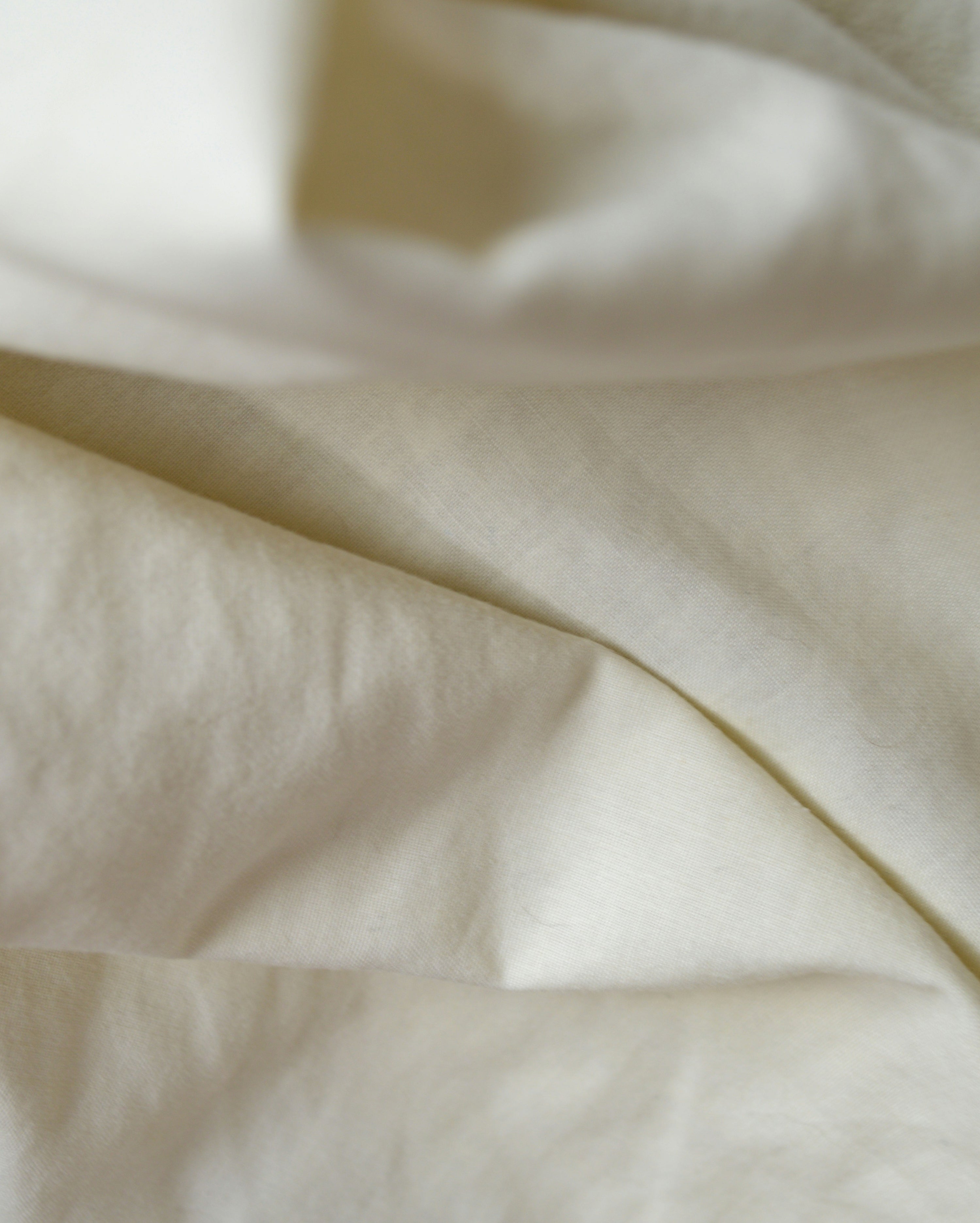
The World's Most Sustainable Materials
This blog post is dedicated to mindful individuals seeking the most sustainable materials to reduce wasteful consumption.
How do you measure sustainability?
There's a slight misconception about sustainability in textiles. We often think only natural yarns can be sustainable, which is not always the case.
Sustainable materials require:
- low-water consumption during production
- low-electricity consumption
- little or no land to grow
- low-pesticide usage
- little to zero commercial-dyes as colourant
- little or no toxins used for fiber extraction
Here, we won't touch on the labour as it belongs to the ethical attributes, separate from the material properties.
Right, let's dive in!
Most Sustainable Textiles
- Deadstock - aka Surplus
Deadstock is truly the magic word when it comes to choosing a material that requires absolutely nothing to produce as it is a leftover from factories' overproduction or large fashion houses' overstock. Deadstock is a ready-made fabric that is untouched, but not required anymore - more often than not, ending up on landfills.
Fortunately, in recent years, deadstock has garnered praise for its sustainability. Designer brands such as Chanel, Dior, and Louis Vuitton have begun trading their luxury textiles, which are then reworked by small artisan brands. This trend allows a broader audience to access pieces made from these exclusive materials, all thanks to the increasing popularity of deadstock fabrics.

Image ref.: 1
Deadstock polymers vs deadstock natural fibers.
We vote for both. Since they are deadstock, both are equally sustainable, except that natural fibers biodegrade while polymers don't. However, poly yarns can be recycled and made into fresh yarn, unlike cellulose.
2. Vintage re-work
Vintage shops are wonderful, filled with beautiful, high-quality pieces from the good old days when quality meant what it said. Vintage clothes are much the same as deadstock supply but in a ready-made apparel version.
3. Cupro
Cupro is still less known and recognized as a sustainable alternative; however, it boasts outstanding properties—versatile, soft, and drapes well—often used as vegan silk.
Essentially a production leftover of cotton, cupro's micro-fluffs are collected and spun into yarns, resulting in an incredibly finely-woven fiber DNA that competes well with silk. We would classify this material as a luxury fresh deadstock, as the yarns are made from the by-product of cotton.
 Image ref.: 2
Image ref.: 24. Lyocell Bamboo
Bamboo, as discussed in an earlier post, is one of the most sustainable "fresh" yarns you can opt for. It requires 80% less water than regular cotton, grows incredibly quickly, and needs very little land and zero pesticides to thrive. Additionally, bamboo offers excellent health benefits and yarn properties: it's antibacterial, versatile, breathable, strong, and incredibly soft.
5. Tencel™
Tencel is equivalent to Lyocell in alternate terminology. Lyocell involves a closed-loop extraction process where 80% of the solvent (the chemical that breaks down the cellulose into fibers for spinning) is recycled. Tencel primarily utilizes wood pulp as the main source for cellulose.
So, where is cotton?
Nowhere.
Cotton falls far short of being as sustainable as other natural fibers on the market. It consumes immense amounts of water, relies heavily on pesticides, and requires vast expanses of land for cultivation. Additionally, untreated cotton is generally rough in texture, often necessitating harsh chemical treatments for softening, followed by surface treatments using industrial metal spikes. These spikes, akin to metal brushes, break and split the fabric's yarn, resulting in further damage.
Furthermore, conventional cotton undergoes extensive chemical treatment, leading to significant damage to the fiber DNA, resulting in pilling and a shorter overall lifespan.
Polyester
There is only one material worse than cotton: polyester.
Polyester originates from petroleum, which isn't necessarily the best starting point for a garment worn close to the skin. Additionally, polyester cannot be recycled, and its production process is highly polluting, which is unacceptable to us.
However, deadstock polyester is exempt from these concerns, as deadstock can be repurposed.
PE vs PA
These two should never be mistaken.
PE stands for Polyester in a shorter version, while PA stands for Polyamide. Polyester is a rigid man-made yarn that cannot be recycled, whereas Polyamide, also a man-made yarn, boasts better quality with a longer lifespan and is recyclable.
PA, also known as Polyamide, is also referred to as Nylon, Nylon 6, and Nylon 66 (rebranded due to a bad reputation, we assume).
In all our collections, we exclusively use deadstock Polyamide (PA) as we believe it is by far the most sustainable and suitable mesh alternative to any other man-made polymers out there.
Because we all love a bit of mesh sheerness while consciously minding the environment's business.
Final Word
We hope this article has helped you learn more about your sustainable material options and cleared away any misconceptions or doubts you may have encountered.
The majority of the above information stems from the founder's firsthand knowledge gained while working for fast-fashion brands, overseeing production processes, and resourcing materials.
Image ref.: 1 Ethan Bodnar (2018) Available at: https://unsplash.com/photos/white-textile-lot-kgC99X3WH1w (Accessed 8 March 2024).
Image ref.: 2 Julissa Santana (2021) NIKON CORPORATION, NIKON D3200. Available at: https://unsplash.com/photos/white-textile-on-brown-wooden-table-B99QPn0T_7Q (Accessed 8 March 2024).





Leave a comment
This site is protected by hCaptcha and the hCaptcha Privacy Policy and Terms of Service apply.